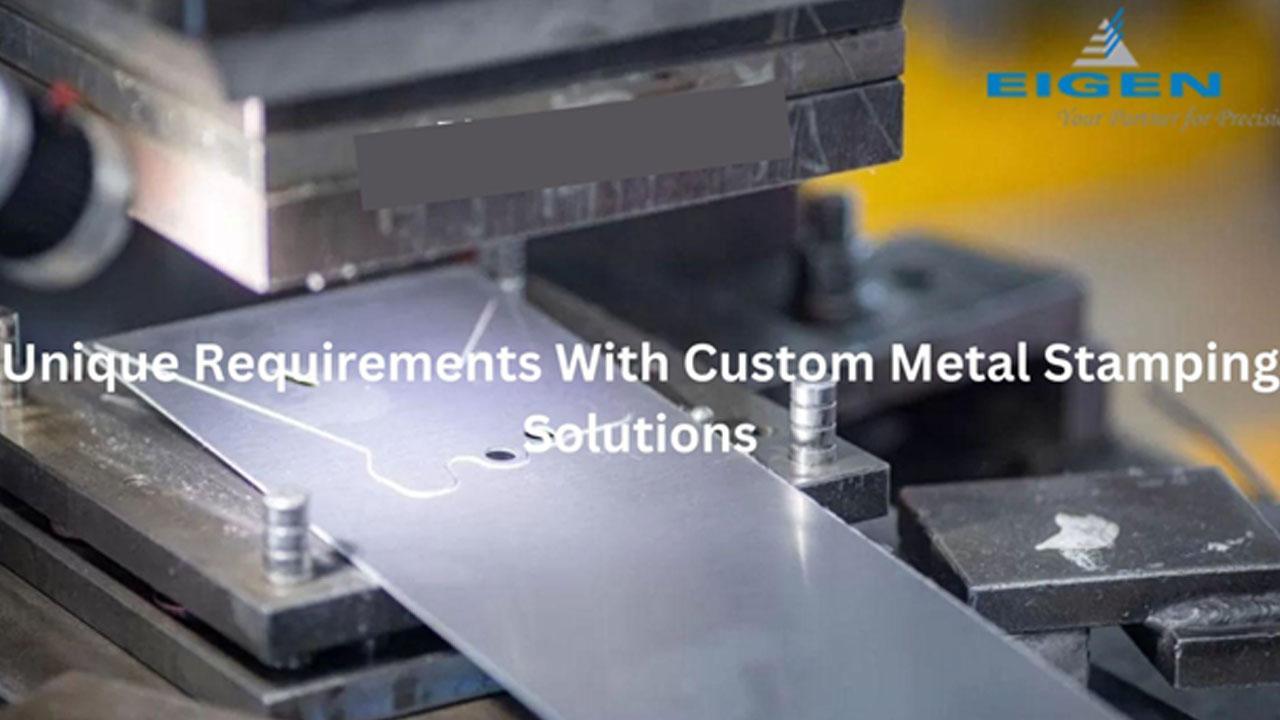Extrusion is the process of molding metal within the diameter of a pierced hole, commonly used to secure fasteners during part assembly.

The metal stamping industry has just expanded its innovations and introduced custom metal stamping. Custom metal stamping is a versatile production method that offers several benefits to enterprises across various sectors.
ADVERTISEMENT
Custom metal stamping refers to metal forming operations that need unique stamping tools and die methods for producing parts based on customer specifications.
This method is preferred for mass-producing high-precision components. In this post, you can explore the process of custom metal stamping.
Process Involved In Shaping Custom Metal Stampings
Stamping is a group of sheet metal forming techniques that can be performed in a single station operation, with each press stroke shaping the metal object or in a series of phases. The following procedures are used in the press to achieve the required shape.
Bending
Bending is bending a sheet metal product by varying its angular displacement. In certain processes, one edge of the metal piece remains stationary while the other edge is secured by a metal tool and bent over a form. It results in a precise bend or shape. Look for professional industrial metal stamping services that use excellent bending techniques to achieve the desired outcome.
Blanking
Using a punching operation, the blanking technique removes a metal piece from an existing metal strip or sheet. The section of material taken during this procedure is transformed into a new metal piece.
Coining
Coining is a shaping technique that uses high temperatures to drive a metal piece into a die. The die forms the metal into a precise shape. Coining also helps smooth the edges of metal pieces by submitting them to a high-pressure level. This procedure effectively eliminates existing burrs while increasing the metal's durability.
Crash/Crush Forming
This approach deforms the metal exclusively with a punch and cavity. Unlike dies that regulate metal flow, these dies do not prevent the metal from wrinkling or buckling. Custom metal stamping is utilized for shaping simple parts like brackets and braces. These components are often crafted from thick, robust metals that exhibit greater wrinkling resistance than thinner metals.
Embossing
Embossing in custom metal stampings is a precise cold-forming technique that imparts intricate designs or patterns onto metal surfaces. Utilizing male and female embossing components, this process applies controlled force to create three-dimensional features on the metal piece. It adds aesthetic and functional elements to custom metal stamping applications.
Extrusion
Extrusion is the process of molding metal within the diameter of a pierced hole, commonly used to secure fasteners during part assembly. This procedure contributes to the development of integral features, which improve the usefulness and versatility of metal components in various manufacturing applications.
Flanging
The flanging process extends metal along a curved axis to shape a part's projection or rim. It is very useful for part assembly and achieving stiffness requirements. This approach contributes to creating components with greater structural integrity and functionality.
Forming
Metal stamping refers to various forming procedures in which stamping press tools mold metal material using tension, compression, or a combination. The material's qualities and the crucial dimensions of the part govern the forming operation. It results in a balance between formability and strength during the production process.
Lancing
Lancing is the process that is used to release metal without completely separating it from the metal strip. This approach is normally utilized in innovative dies, in which the lanced metallic acts as a factor provider. It allows for additional processing and shaping in the course of the producing technique.
Shaving
The shaving process eliminates a thin layer from a metallic piece to gain correct measurements or improve the surface finish. This is typically completed with a particular tool or slicing mechanism. The best custom metal stamping companies utilize an excellent stamping tool and die process to meet the specifications and expectations of their customers.
Trimming
Trimming in unique metal stampings removes extra components or undesired features from stamped metal products. This technique ensures that the finished product meets exact requirements and improves the overall quality of the metal components. Trimmed edges help achieve the intended shape and functionality of the metal piece. It makes trimming an important stage in bespoke metal stamping procedures.
Final words
Selecting an appropriate approach relies upon a couple of elements, which include the form of material, design complexity, and manufacturing quantity. Engaging with a seasoned sheet metal stamping manufacturer can aid in identifying the most suitable process for your project.
 Subscribe today by clicking the link and stay updated with the latest news!" Click here!
Subscribe today by clicking the link and stay updated with the latest news!" Click here!







